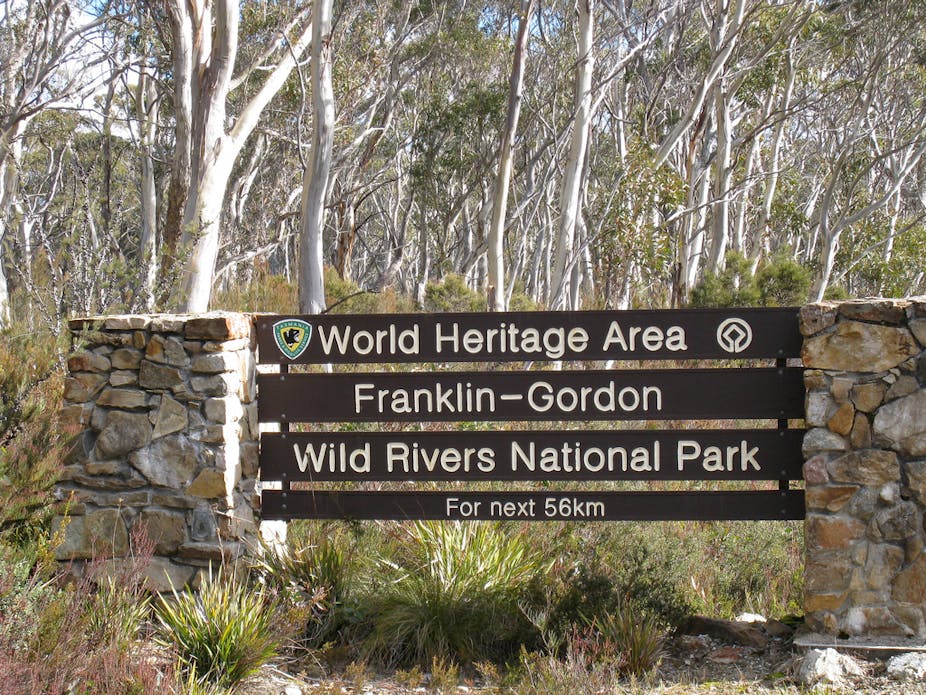Many plants and animals will become extinct in this century – millions of years of evolutionary experimentation will be abruptly terminated.
This raises profound philosophical dilemmas: which species should be saved and why? Who should decide on the necessary trade-off between conservation and development? And do we have sufficient skills to conserve the remaining plant and animal species in increasingly stressed natural environments?
Keeping it mainstream: the “protected areas” approach
The approach we take now was developed in the 20th century: establish protected areas, such as national parks. In these places, society forfeits forever the right to resource development.
Outside the parks it has been pretty much open season on nature in agricultural landscapes. The bits that survived were largely protected by economic factors – habitat survived if it wasn’t worth spending money clearing the land, and in some cases, because of an emotional attachment to uncleared bushland.
But pressure is increasing on even these remaining uncleared and unprotected landscapes. Schemes to increase agricultural production, harvest water and mine mineral deposits are all impinging on habitat preservation.
The “protected area” conservation approach has almost reached its practical and political limits. Even in a rich and sparsely populated country like Australia there is substantial reluctance to set aside national parks because they “lock up” natural resources and foreclose development opportunities. And government funding for managing existing protected areas is tight and will remain so.
In any case, plants and animals and associated ecological processes don’t recognise the boundaries of nature reserves. A lot of biodiversity still remains outside the protected area estate. How will we secure the future of this unprotected biodiversity?
Protecting biodiversity that’s “off-reserve”
At first blush, “off-reserve” conservation should present enormous opportunities for win-wins. However, off-reserve conservation introduces new philosophical issues about the collision of public and private rights.
In brief, “off-reserve” conservation is an approach where land owners are encouraged by a variety of legal and financial instruments to manage their land in a manner that is sympathetic for the survival of biodiversity for a fixed or perpetual basis. Such agreements don’t necessarily preclude management practices such as grazing of native vegetation and firewood collection.
Why should private landowners give up their rights to development? Conversely, should private landowners have the right to destroy irreplaceable products of evolution? Why should private landowners pay for conservation activities on their land? Who should be responsible for biodiversity management?
Resolving these issues is creating a range of approaches which span the political spectrum, in the same way as debates about public and private education.
The state can’t do it all
Our society accepts that education is mandatory for children and that the state should provide education freely. Yet it is also accepted that parents should have the right to educate children outside the state system. Within bounds, private educational system are permitted to organise around specific philosophies.
Likewise our society accepts the need to conserve biodiversity using a variety of political instruments and private programs. In the case of non-government conservation programs there are a range of actors with strongly contrasting, and sometimes conflicting, agenda: indigenous groups, farmers, urban conservations, naturalists, entrepreneurs brokering schemes to sequester carbon and so on.
Approaches include restoration schemes that take a range of approaches, from restoring degraded ecosystems through to biodiversity-friendly plantations like the new carbon farming initiative. Some conservation organisations believe owning the land themselves is the key to sustaining biodiversity. Others believe partnerships with landowners are more effective.
Such partnerships can involve legal agreements where the owners forgo their rights to development. Or they might get financial incentives to maintain the condition of land.
But external factors can undermine the security of these “off-reserve” schemes. Consider, for example, the current proposal to destroy half the Bimblebox private nature refugia in Queensland.
Will money always win out?
In the future the economic benefits of development will no doubt far outweigh past commitments to conservation. Future generations who inherit land may decide to develop natural resources and legally change past agreements. This issue will be of enormous significance to communal title to land held by Aboriginal groups.
The vast Aboriginal lands in northern Australia constitute a much greater conservation asset than the comparatively small existing national park estate, and the future for biodiversity hinges on the continuing sympathetic management of these indigenous lands. An important innovation for biodiversity conservation has been the development of “indigenous protected areas” that includes a small proportion of Aboriginal lands.
The jury is still out on what form of off-reserve conservation works best, or how best to maintain the ecological integrity of landscapes. It is widely accepted that climate change will compound the global biodiversity crisis.
The current protected area estate is almost certainly too underpowered to effectively conserve biodiversity in these circumstances. And it remains unclear if off-reserve conservation will be able to effectively buffer the protected area network.
In essence, Australia’s off-reserve conservation dilemmas are the same as destruction of rainforests in developing countries. Developing countries argue they have a right to develop their forests just as the developed world has.
Financial incentive schemes like the reduced emissions from deforestation and degradation (REDD) program designed to conserve tropical rainforests may be able to slow the rate of destruction. But the risk remains that in the long run, external drivers to develop land will overwhelm these schemes.
In the 21st century the only certainty is change. While that is bad news for the evolutionary trajectory of a lot of organisms it makes national parks ever more important insurance policy for what will survive.

